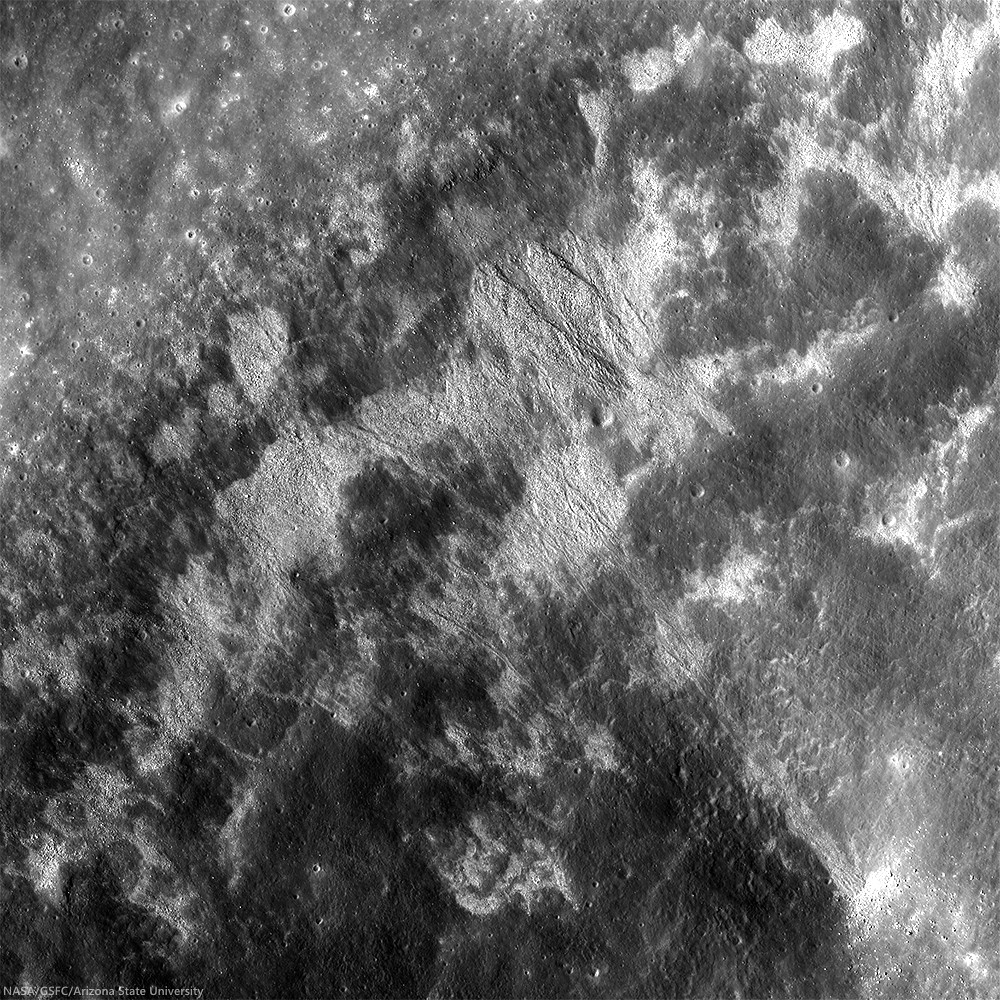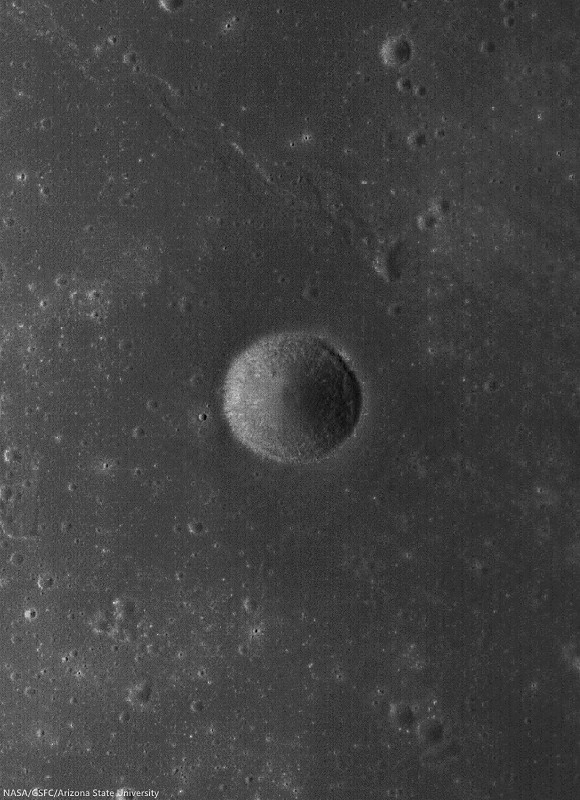 |
| High reflectance material poured down the walls toward the floor of Maskelyne B crater, indicating interbedding of high reflectance with low reflectance layers in its walls. Image field of view is 2800 meters, vertical relief across this view is 1300 meters in depth. LROC NAC mosaic M137360167LR, LRO orbit 5376, August 25, 2010; 35.77° incidence angle, resolution 51 cm from 47.04 km [NASA/GSFC/Arizona State University]. |
LROC News System
Maskelyne B (8.34 km; 1.97°N, 28.96°E) is a simple crater in southern Mare Tranquillitatis, about 1800 meters deep across only 8 km. The stratigraphy revealed in the walls of the Maskelyne B impact crater are clues to the volcanic history in Mare Tranquillitatis.
Perhaps there is older, higher reflectance anorthositic material beneath younger and darker basaltic lava flows. Layering also occurs by large impacts ejecting and emplacing older subsurface material on the local terrain. The most likely cause for the layers seen in Maskelyne B is from the erosion of large coherent blocks of unexposed mare basalt over mature space-weathered regolith. High resolution spectral imaging or samples of this area would resolve this ambiguity.
Perhaps there is older, higher reflectance anorthositic material beneath younger and darker basaltic lava flows. Layering also occurs by large impacts ejecting and emplacing older subsurface material on the local terrain. The most likely cause for the layers seen in Maskelyne B is from the erosion of large coherent blocks of unexposed mare basalt over mature space-weathered regolith. High resolution spectral imaging or samples of this area would resolve this ambiguity.
 |
| Maskelyne B (8.34 km; 1.97°N, 28.96°E) The region in Mare Tranquillitatis was a guidance landmark for the Apollo 11 expedition in 1969, and the terrain shares much with the sampled Tranquility Base only 170 km to the southwest by west. LROC WAC observation M129099228C (566 nm), LRO orbit 4158, May 21, 2010; 52.61° incidence angle, resolution 56.14 meters from 39.87 km [NASA/GSFC/Arizona State University]. |
 |
| High-resolution reproduction of the LROC NAC mosaic M137360167LR, and the northwest semicircle of Maskelyne B is available HERE [NASA/GSFC/Arizona State University]. |
Related Posts:


No comments:
Post a Comment